Apples
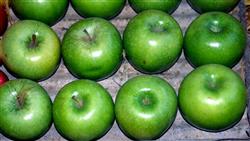 There are approximately 25 species and hundreds if not thousands of named cultivars of deciduous fruit bearing trees and shrubs. Some cultivars are developed to suit warmer or cooler climates, though generally speaking apples do mest in temperate climates. Apples are distinguished from pears by the softer, sometimes hairy, leaf surface. Some are grown mainly for their edible fruit, and others mainly for decorative flowers and smaller coloured fruits that are used for making preserves....(Excerpt from page) Click to read more There are approximately 25 species and hundreds if not thousands of named cultivars of deciduous fruit bearing trees and shrubs. Some cultivars are developed to suit warmer or cooler climates, though generally speaking apples do mest in temperate climates. Apples are distinguished from pears by the softer, sometimes hairy, leaf surface. Some are grown mainly for their edible fruit, and others mainly for decorative flowers and smaller coloured fruits that are used for making preserves....(Excerpt from page) Click to read more
|
Autumn Vegetables
 It may seem strange to start a vegetable garden in autumn, which for many areas is at the end of the official growing season, but with a bit of care and planning it can be extremely successful. You can have delicious veg growing all winter, outside in your own back garden. What could be better! ...(Excerpt from page) Click to read more It may seem strange to start a vegetable garden in autumn, which for many areas is at the end of the official growing season, but with a bit of care and planning it can be extremely successful. You can have delicious veg growing all winter, outside in your own back garden. What could be better! ...(Excerpt from page) Click to read more
|
Avocado Growing
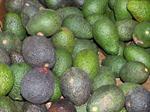 Avocados are large, evergreen shrub or tree with glossy green leaves. Fruit either green or black, smooth or rough. Some flowers open males in morning and females in afternoon, and others visa-versa. These are classed as A and B pollinators. ...(Excerpt from page) Click to read more Avocados are large, evergreen shrub or tree with glossy green leaves. Fruit either green or black, smooth or rough. Some flowers open males in morning and females in afternoon, and others visa-versa. These are classed as A and B pollinators. ...(Excerpt from page) Click to read more
|
Citrus Trees
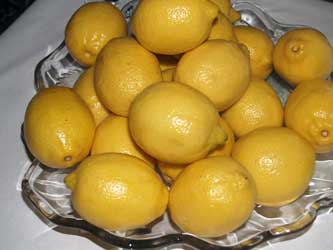 Lemon trees (and other citrus) are one of the most popular trees grown in home gardens. Nurserymen, landscapers and garden experts of all types, from London to Sydney and everywhere between, will tell you they get more questions about citrus than anything....(Excerpt from page) Click to read more Lemon trees (and other citrus) are one of the most popular trees grown in home gardens. Nurserymen, landscapers and garden experts of all types, from London to Sydney and everywhere between, will tell you they get more questions about citrus than anything....(Excerpt from page) Click to read more
|
Fruit Set is affected by hours of cold
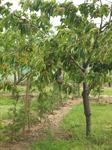
|
Grow and Use Beetroot
 The name 'beetroot' actually refers to the root of the beet plant. No surprises there. Unless you've grown them though you may not realise that the swollen taproot sits proud of the soil surface. This is helpful because the root is less likely to be marked by stones in the soil if you have a stony vegetable plot. ...(Excerpt from page) Click to read more The name 'beetroot' actually refers to the root of the beet plant. No surprises there. Unless you've grown them though you may not realise that the swollen taproot sits proud of the soil surface. This is helpful because the root is less likely to be marked by stones in the soil if you have a stony vegetable plot. ...(Excerpt from page) Click to read more
|
Growing Figs
 The fig (Ficus carica) is a large spreading deciduous tree with very broad leaves. It also has a number of rather unusual features. The flowers are enclosed within a fleshy receptacle which eventually becomes the fruit. The tree likes warm climates and should be protected from frost when young. The mature tree, on the other hand, is astonishingly hardy and may even tolerate as much as 10 degrees of frost. The trees also bear two crops of fruit per year....(Excerpt from page) Click to read more The fig (Ficus carica) is a large spreading deciduous tree with very broad leaves. It also has a number of rather unusual features. The flowers are enclosed within a fleshy receptacle which eventually becomes the fruit. The tree likes warm climates and should be protected from frost when young. The mature tree, on the other hand, is astonishingly hardy and may even tolerate as much as 10 degrees of frost. The trees also bear two crops of fruit per year....(Excerpt from page) Click to read more
|
Growing Potatoes
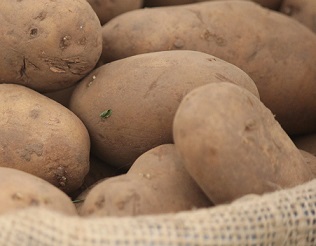 The potato is a low-growing, leafy, green, herbaceous plant in the Solanaceae plant family. It is generally a warm-season root crop. Tubers can be stored in a cool, dark place for several months....(Excerpt from page) Click to read more The potato is a low-growing, leafy, green, herbaceous plant in the Solanaceae plant family. It is generally a warm-season root crop. Tubers can be stored in a cool, dark place for several months....(Excerpt from page) Click to read more
|
Growing Tomatoes
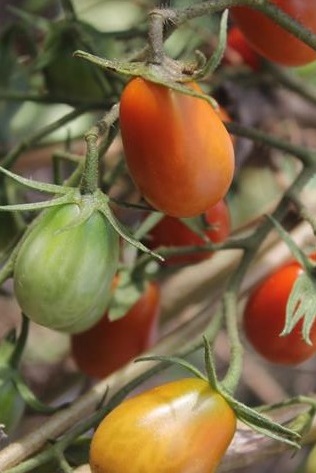 Tomatoes are the most widely grown vegetable by home gardeners around the world. In recent years the interest in home grown tomatoes seems to have reached new heights because many of the tomatoes available through stores can be insipid and bland tasting. But many home grown heirloom species still pack the delicious taste of yesteryear. ...(Excerpt from page) Click to read more Tomatoes are the most widely grown vegetable by home gardeners around the world. In recent years the interest in home grown tomatoes seems to have reached new heights because many of the tomatoes available through stores can be insipid and bland tasting. But many home grown heirloom species still pack the delicious taste of yesteryear. ...(Excerpt from page) Click to read more
|
High Bush Blueberries
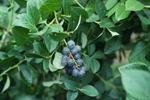 High-bush Blueberries (Vaccinium corymbosum) are shrubs to about 2m tall. They have a low drought tolerance, however, and will normally require irrigation. ...(Excerpt from page) Click to read more High-bush Blueberries (Vaccinium corymbosum) are shrubs to about 2m tall. They have a low drought tolerance, however, and will normally require irrigation. ...(Excerpt from page) Click to read more
|
How to Grow Cabbage
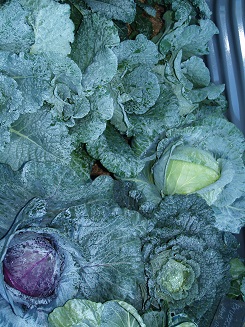 Cabbages are one of several ‘cole’ crops, or cruciferous vegetables, which all belong to the genus Brassica, and the family Brassicaceae. Other members of this group include Brussels sprouts, broccoli, kohlrabi and kale....(Excerpt from page) Click to read more Cabbages are one of several ‘cole’ crops, or cruciferous vegetables, which all belong to the genus Brassica, and the family Brassicaceae. Other members of this group include Brussels sprouts, broccoli, kohlrabi and kale....(Excerpt from page) Click to read more
|
How to Grow Olives
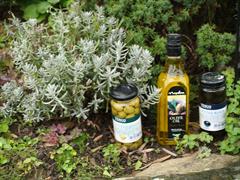 Approximately 20 species, though only O. europea is grown widely throughout the world. The notes below relate to O. europea. It is a small tree with small green, opposite & normally entire leaves. The leaf underside is an attractive silvery colour. Creamy-white small flowers are followed by edible fruit (olive). The olive is grown for its ornamental foliage and edible fruit. It is a tough, long-lived plant in the right conditions. They also make a good hedge or windbreak plant. They can be excellent as a feature plant in a warm position such as a courtyard as long as humidity levels don’t get too high....(Excerpt from page) Click to read more Approximately 20 species, though only O. europea is grown widely throughout the world. The notes below relate to O. europea. It is a small tree with small green, opposite & normally entire leaves. The leaf underside is an attractive silvery colour. Creamy-white small flowers are followed by edible fruit (olive). The olive is grown for its ornamental foliage and edible fruit. It is a tough, long-lived plant in the right conditions. They also make a good hedge or windbreak plant. They can be excellent as a feature plant in a warm position such as a courtyard as long as humidity levels don’t get too high....(Excerpt from page) Click to read more
|
How to Grow Star Fruit
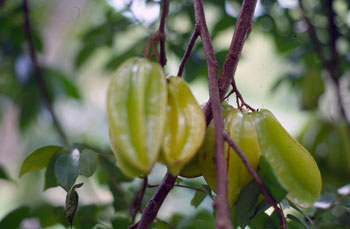 Averrhoa or Carambola is a tropical, evergreen tree which may be semi-deciduous or even deciduous in cooler districts. ...(Excerpt from page) Click to read more Averrhoa or Carambola is a tropical, evergreen tree which may be semi-deciduous or even deciduous in cooler districts. ...(Excerpt from page) Click to read more
|
How to Harvest Berries
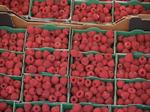
|
Learn to grow Cucumbers
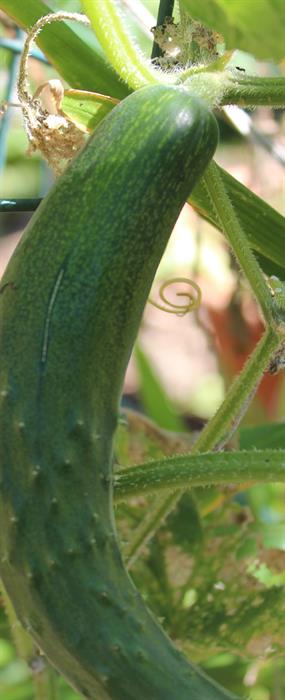 In temperate climates, cucumbers are best started in Spring. In warmer places, it is possible to start them at other times as long as you can keep them warm enough. In warmer climes seed can be sown out directly into vegie beds or planters. Once soil temperatures begin to warm above 16°C they can be planted out elsewhere. ...(Excerpt from page) Click to read more In temperate climates, cucumbers are best started in Spring. In warmer places, it is possible to start them at other times as long as you can keep them warm enough. In warmer climes seed can be sown out directly into vegie beds or planters. Once soil temperatures begin to warm above 16°C they can be planted out elsewhere. ...(Excerpt from page) Click to read more
|
| Legumes for Food and Amenity
Who hasn’t grown peas or beans at home, and what would a big breakfast be without a splash of baked beans? Legumes are also among some of our most spectacular garden plants, and include the likes of wattles, robinias, and wisterias....(Excerpt from page) Click to read more
|
Mango Growing
 Mangos (Mangifera species), are large, dense trees with scented, deep-green leaves. Flower sprays produced in spring followed by fruit which mature to green-red. Large seed with fibrous fleshy pulp....(Excerpt from page) Click to read more Mangos (Mangifera species), are large, dense trees with scented, deep-green leaves. Flower sprays produced in spring followed by fruit which mature to green-red. Large seed with fibrous fleshy pulp....(Excerpt from page) Click to read more
|
Mushrooms
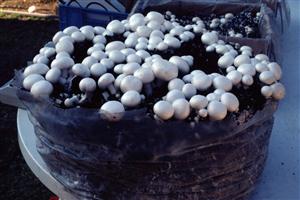 The Most Commonly Grown Mushroom is Agaricus bisporis is the most commonly grown commercial mushroom.
This is what is most often sold in supermarkets across Europe, America, Australia, etc; and what we would normally buy or grow in a "Mushroom Growing Kit".
Other types of mushrooms have been commonly cultivated or collected and used for culinary, or even medicinal purposes in some countries for centuries.
Though some of these other varieties are growing in popularity across even countries like Australia and the UK; Agaricus bisporus still remains the most widely identified and cultivated edible mushroom.
For a brief outline of what's involved in growing and using Agaricus bisporus, read the extract from our principal's vegetable book that follows....(Excerpt from page) Click to read more
The Most Commonly Grown Mushroom is Agaricus bisporis is the most commonly grown commercial mushroom.
This is what is most often sold in supermarkets across Europe, America, Australia, etc; and what we would normally buy or grow in a "Mushroom Growing Kit".
Other types of mushrooms have been commonly cultivated or collected and used for culinary, or even medicinal purposes in some countries for centuries.
Though some of these other varieties are growing in popularity across even countries like Australia and the UK; Agaricus bisporus still remains the most widely identified and cultivated edible mushroom.
For a brief outline of what's involved in growing and using Agaricus bisporus, read the extract from our principal's vegetable book that follows....(Excerpt from page) Click to read more
|
Nuts to Grow Commercially or at Home
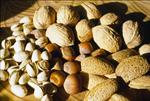 Edible nuts mostly come from trees (peanuts are an exception); and often need 5 years to produce a crop (sometimes up to 10 or 15 years)....(Excerpt from page) Click to read more
Edible nuts mostly come from trees (peanuts are an exception); and often need 5 years to produce a crop (sometimes up to 10 or 15 years)....(Excerpt from page) Click to read more
|
Pear -Pyrus
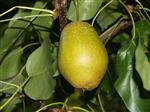 There are approximately 20 species of Pyrus; and many varieties of deciduous trees with pear-shaped fruits, including ornamental species as well as others grown for their edible fruit. They often have attractive gold to orange autumn foliage. Blossom in late winter or early spring can cover the tree and also be very attractive....(Excerpt from page) Click to read more There are approximately 20 species of Pyrus; and many varieties of deciduous trees with pear-shaped fruits, including ornamental species as well as others grown for their edible fruit. They often have attractive gold to orange autumn foliage. Blossom in late winter or early spring can cover the tree and also be very attractive....(Excerpt from page) Click to read more
|
Strawberry Crop Production
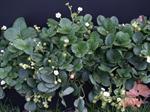 Strawberries are relatively short-lived herbaceous perennials, producing for 2 to 3 years. Plant in an open, sunny position in raised beds; a good airflow will reduce fungal diseases. Strawberries prefer a well-drained soil, rich in humus. Dig in lots of organic matter, compost, animal manure or blood and bone, about a month before planting. Keep the beds well mulched, to control weeds and keep the fruit clean....(Excerpt from page) Click to read more Strawberries are relatively short-lived herbaceous perennials, producing for 2 to 3 years. Plant in an open, sunny position in raised beds; a good airflow will reduce fungal diseases. Strawberries prefer a well-drained soil, rich in humus. Dig in lots of organic matter, compost, animal manure or blood and bone, about a month before planting. Keep the beds well mulched, to control weeds and keep the fruit clean....(Excerpt from page) Click to read more
|
Vegetables and Fruit
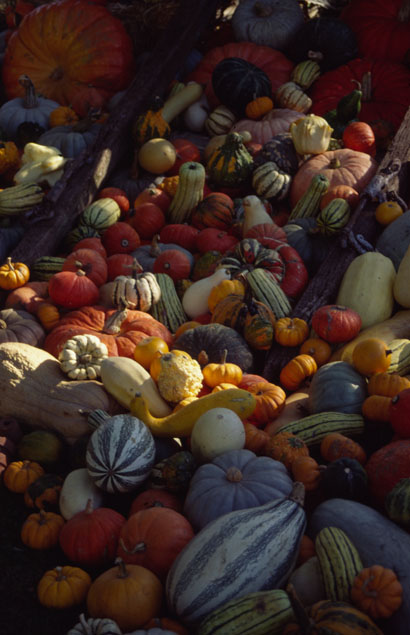 Read on for Advice on growing salad greens, pumpkins, cucumbers and other summer vegetables.
...(Excerpt from page) Click to read more Read on for Advice on growing salad greens, pumpkins, cucumbers and other summer vegetables.
...(Excerpt from page) Click to read more
|
Viticulture
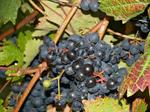 Grapes are produced as a fresh and dried fruit, but also to produce fruit juice, and most importantly wine. Wine can be produced on any scale. The largest wine producers are multi national companies with vineyards and wineries spread across the globe. Despite the competition, small boutique wineries continue to emerge and develop as successful businesses and thousands of amateurs continue to grow and make wine at home, sometimes from little more than one or two vines....(Excerpt from page) Click to read more Grapes are produced as a fresh and dried fruit, but also to produce fruit juice, and most importantly wine. Wine can be produced on any scale. The largest wine producers are multi national companies with vineyards and wineries spread across the globe. Despite the competition, small boutique wineries continue to emerge and develop as successful businesses and thousands of amateurs continue to grow and make wine at home, sometimes from little more than one or two vines....(Excerpt from page) Click to read more
|
Watermelons and Cantaloupe
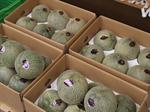 Melons are very large fast growing, and potentially highly productive vines. You can grow them on a trellis or let them spread over the ground. One plant can spread metres in diameter....(Excerpt from page) Click to read more Melons are very large fast growing, and potentially highly productive vines. You can grow them on a trellis or let them spread over the ground. One plant can spread metres in diameter....(Excerpt from page) Click to read more
|